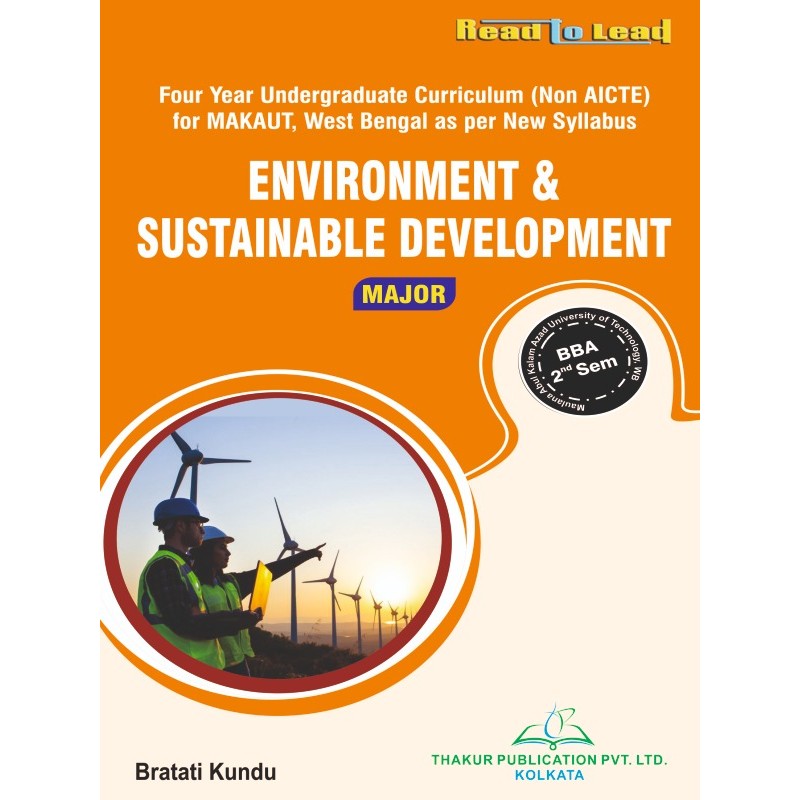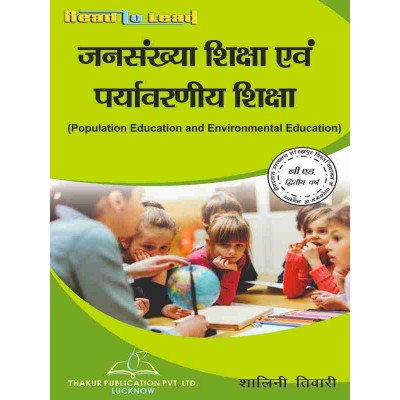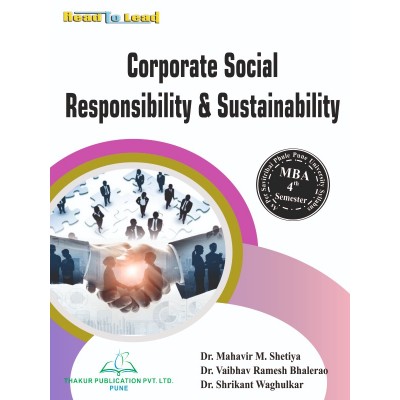Categories
- Pharmacy
-
Nursing
-
MBA
-
BBA
- U.P. State University
- Veer Bahadur Singh Purvanchal University, Jaunpur
- Chaudhary Charan Singh University, Meerut
- Dr. Bhimrao Ambedkar University, Agra
- Chhatrapati Shahu Ji Maharaj University, Kanpur
- Mahatma Jyotiba Phule Rohilkhand University, Bareilly
- Mahatma Gandhi Kashi Vidyapith, Varanasi
- Dr. Ram Manohar Lohia Avadh University, Ayodhya
- Deen Dayal Upadhyaya Gorakhpur University
- Prof. Rajendra Singh (Rajju Bhaiya) University, Prayagraj
-
BCA
- UP State Universities
- University of Pune
- I.K.Gujral Punjab Technical University (PTU)
- University of Rajasthan
- Rashtrasant Tukadoji Maharaj Nagpur University
- Uttar Pradesh NEP2020
- University of Rajasthan ,Jaipur (According to NEP-2020)
- BCCA (B. Com - Computer Science)
- Haryana
- West Bengal
- BBA (CA)
- PUNE BCA (Sci,Commerce)/B.Com (CA)
- Dr. A. P. J. Abdul Kalam Technical University, Lucknow ( AKTU )
- MCA
-
B Ed
- Lucknow University B.Ed Books
- Chaudhary Charan Singh University/Maa Shakambhari University, Saharanpur
- Dr Bhim Rao Ambedkar University, Agra
- Mahatma Gandhi Kashi Vidyapeeth, Varanasi
- Chhatrapati Shahu Ji Maharaj University
- Prof. Rajendra Singh (Rajju Bhaiya) University, Prayagraj (PRSU)
- Mahatma Jyotiba Phule Rohilkhand University(Mjpru), Bareilly
- Dr. Ram Manohar Lohia Avadh University, Ayodhya
- Bundelkhand University, Jhansi
- B.A,B.ed
- B.Sc, B.ed
- Deen Dayal Upadhyaya Gorakhpur University
- Veer Bahadur Purvanchal University (VBPU)
- Maharaja Suhel Dev State University ,Azamgarh (MSDSU)
- Raja Mahendra Pratap Singh State University, Aligarh (RMPSSU)
- Barkatullah Vishwavidyalaya (Bhopal)
- Jiwaji University (Gwalior)
- Vikram University (Ujjain)
- Dr. Harisingh Gour University (Sagar)
- Devi Ahilya Vishwavidyalaya (Indore)
- Rani Durgavati Vishwavidyalaya (Jabalpur)
- Awadhesh Pratap Singh University (Rewa)
- Maharaja Chhatrasal Bundelkhand University (Chhatarpur)
- D. EL. ED
- TET
-
B Com
-
B Sc
- B.Sc. U.P. State Universities Common Syllabus NEP
- Veer Bahadur Singh Purvanchal University, Jaunpur
- University of Lucknow
- Chaudhary Charan Singh University, Meerut
- Madhya Pradesh
- Chhatrapati Shahu Ji Maharaj University, Kanpur
- Dr. Bhimrao Ambedkar University, Agra
- Mahatma Gandhi Kashi Vidyapith, Varanasi
- DEEN DAYAL UPADHYAYA GORAKHPUR UNIVERSITY
- Prof. Rajendra Singh (Rajju Bhaiya) University, Prayagraj
- Dr. Ram Manohar Lohia Avadh University, Ayodhya
- Mahatma Jyotiba Phule Rohilkhand University, Bareilly
- Uttarakhand State Universities
- B.Sc. Bihar Universities Common Syllabus NEP
- University of Rajasthan (Jaipur)
- Haryana
-
Bachelor of Arts [B.A.]
- B.A. Of U.P. State Universities Common Syllabus NEP
- Veer Bahadur Singh Purvanchal University, Jaunpur
- University of Lucknow
- Chaudhary Charan Singh University, Meerut
- Chhatrapati Shahu Ji Maharaj University, Kanpur
- Dr. Bhimrao Ambedkar University, Agra
- Mahatma Gandhi Kashi Vidyapith, Varanasi
- Deen Dayal Upadhyaya Gorakhpur University
- Prof. Rajendra Singh (Rajju Bhaiya) University, Prayagraj
- Dr. Ram Manohar Lohia Avadh University, Ayodhya
- Mahatma Jyotiba Phule Rohilkhand University, Bareilly
- Madhya Pradesh
- Uttarakhand
- Bihar
- University of Rajasthan (Jaipur Syllabus as Per NEP2020)
- Haryana NEP-2020
- B Tech
- LLB
- SWA Education
ENVIRONMENT & SUSTAINABLE DEVELOPMENT (MAJOR) MAKAUT BBA SECOND SEM

AUTHOR: Bratati Kundu
ISBN : 978-93-5755-869-3
Tax excluded
Contents
|
Module 1: Introduction to Environmental Education |
||
|
1.1. |
Environmental Education |
13 |
|
1.1.1. |
Meaning and Definition of Environmental Studies |
13 |
|
1.1.2. |
Multidisciplinary Nature of Environmental Education |
14 |
|
1.1.3. |
Scope of Environmental Studies |
16 |
|
1.1.4. |
Need and Importance of Environmental Education |
18 |
|
1.2. |
Sustainbility and Sustainable Development |
19 |
|
1.2.1. |
Concept of Sustainability |
19 |
|
1.2.2. |
Need for Sustainability |
19 |
|
1.2.3. |
Meaning and Definition of Sustainable Development |
20 |
|
1.2.4. |
Principles of Sustainable Development |
21 |
|
1.2.5. |
Indicators of Sustainability |
22 |
|
1.2.6. |
Reasons for Unsustainability |
24 |
|
1.2.7. |
From Unsustainable to Sustainable Development |
24 |
|
1.2.8. |
Importance of Sustainable Development |
26 |
|
1.3. |
Exercise |
27 |
|
|
|
|
|
Module 2: Ecosystem Management and Biodiversity Conservation |
||
|
2.1. |
Ecosystem |
28 |
|
2.1.1. |
Concept of an Ecosystem |
28 |
|
2.1.2. |
Structure of an Ecosystem |
28 |
|
2.1.3. |
Abiotic Components |
29 |
|
2.1.4. |
Biotic Components |
29 |
|
2.1.4.1. |
Producers |
30 |
|
2.1.4.2. |
Consumers/ Heterotrophs |
30 |
|
2.1.4.3. |
Decomposers |
31 |
|
2.1.5. |
Functions of an Ecosystem |
31 |
|
2.1.6. |
Energy Flow in the Ecosystem |
32 |
|
2.1.7. |
Food Chains |
33 |
|
2.1.7.1. |
Organisms in Food Chains |
34 |
|
2.1.7.2. |
Types of Food Chains |
34 |
|
2.1.7.3. |
Importance of Food Chains |
35 |
|
2.1.8. |
Food Webs |
35 |
|
2.1.8.1. |
Kinds of Food Webs |
36 |
|
2.1.8.2. |
Difference between Food Web and Food Chain |
37 |
|
2.1.9. |
Nutrient Cycle |
37 |
|
2.1.10. |
Ecological Succession |
38 |
|
2.1.10.1. |
Factors of Ecological Succession |
38 |
|
2.1.10.2. |
Stages of Ecological Succession |
39 |
|
2.1.10.3. |
Types of Ecological Succession |
40 |
|
2.2. |
Ecosystem Types |
41 |
|
2.3. |
Forest Ecosystem |
41 |
|
2.3.1. |
Introduction |
41 |
|
2.3.2. |
Characteristics/Features of Forest Ecosystem |
42 |
|
2.3.3. |
Structure of Forest Ecosystem |
42 |
|
2.3.4. |
Functions of Forest Ecosystem |
43 |
|
2.3.5. |
Types of Forests |
44 |
|
2.4. |
Grassland Ecosystem |
45 |
|
2.4.1. |
Introduction |
45 |
|
2.4.2. |
Characteristics/Features of Grassland Ecosystem |
45 |
|
2.4.3. |
Structure of Grassland Ecosystem |
46 |
|
2.4.4. |
Functions of Grassland Ecosystem |
47 |
|
2.4.5. |
Types of Grassland Ecosystem |
47 |
|
2.5. |
Desert Ecosystem |
48 |
|
2.5.1. |
Introduction |
48 |
|
2.5.2. |
Characteristics/Features of Desert Ecosystem |
48 |
|
2.5.3. |
Structure of Desert Ecosystem |
49 |
|
2.5.4. |
Functions of Deserts Ecosystem |
50 |
|
2.5.5. |
Types of Desert Ecosystem |
51 |
|
2.6. |
Aquatic Ecosystem |
51 |
|
2.6.1. |
Introduction |
51 |
|
2.6.2. |
Characteristics/Features of Aquatic Ecosystem |
52 |
|
2.6.3. |
Structure of Aquatic Ecosystem |
53 |
|
2.6.4. |
Functions of Aquatic Ecosystem |
54 |
|
2.6.5. |
Types of Aquatic Ecosystem |
54 |
|
2.6.5.1. |
Lentic and Lotic Ecosystem |
54 |
|
2.6.5.2. |
Pond Ecosystem |
55 |
|
2.6.5.3. |
Stream and River Ecosystem |
55 |
|
2.6.5.4. |
Lake Ecosystem |
55 |
|
2.6.5.5. |
Ocean Ecosystem |
56 |
|
2.6.5.6. |
Estuarine Ecosystem |
56 |
|
2.6.5.7. |
Marine Ecosystem |
56 |
|
2.6.5.8. |
Wetland |
57 |
|
2.7. |
Ecosystem Management |
57 |
|
2.7.1. |
Introduction |
57 |
|
2.7.2. |
Principles of Ecosystem Management |
58 |
|
2.7.3. |
Strategies to Ecosystem Management |
59 |
|
2.8. |
Sustainable Development and Sustainability Indicators |
60 |
|
2.9. |
Ecological Adaptation |
61 |
|
2.9.1. |
Introduction |
61 |
|
2.9.2. |
Types of Ecological Adaptation |
62 |
|
2.9.3. |
Morphological and Physiological Responses of Organisms to Temperature and Water |
63 |
|
2.10. |
Ecological Interaction |
66 |
|
2.10.1. |
Introduction |
66 |
|
2.10.2. |
Types of Ecological Interactions |
67 |
|
2.10.3. |
Ecological Interactions Based on Duration of Impact |
67 |
|
2.10.3.1. |
Short-Term Interaction |
67 |
|
2.10.3.2. |
Long-Term Interaction |
|
16 other products in the same category:
Your review appreciation cannot be sent
Report comment
Report sent
Your report cannot be sent
Write your review
Review sent
Your review cannot be sent





























